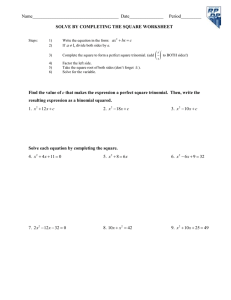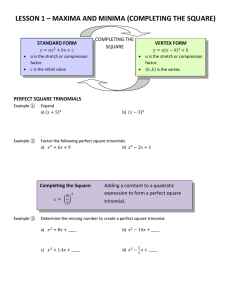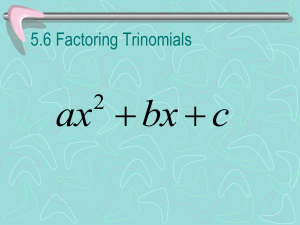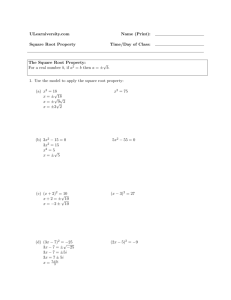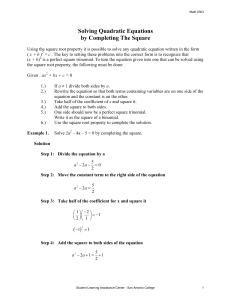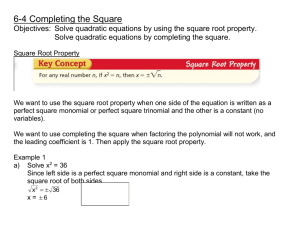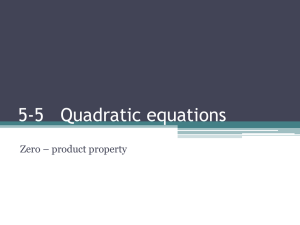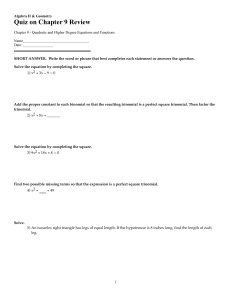Completing the Square
advertisement
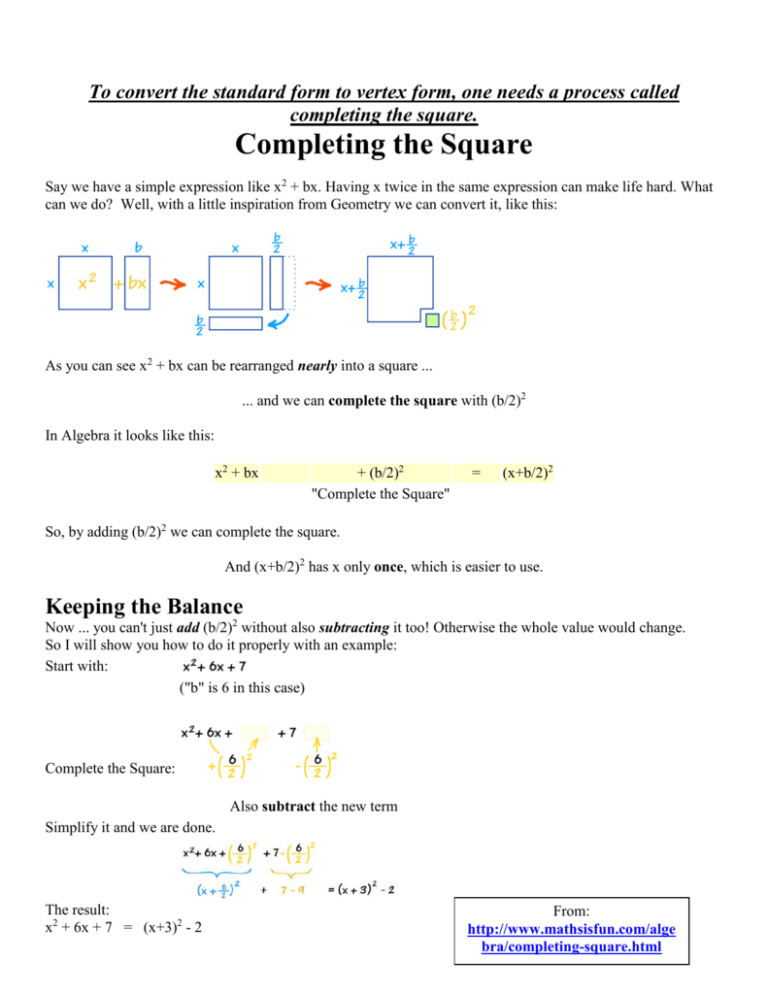
To convert the standard form to vertex form, one needs a process called completing the square. Completing the Square Say we have a simple expression like x2 + bx. Having x twice in the same expression can make life hard. What can we do? Well, with a little inspiration from Geometry we can convert it, like this: As you can see x2 + bx can be rearranged nearly into a square ... ... and we can complete the square with (b/2)2 In Algebra it looks like this: x2 + bx + (b/2)2 "Complete the Square" = (x+b/2)2 So, by adding (b/2)2 we can complete the square. And (x+b/2)2 has x only once, which is easier to use. Keeping the Balance Now ... you can't just add (b/2)2 without also subtracting it too! Otherwise the whole value would change. So I will show you how to do it properly with an example: Start with: ("b" is 6 in this case) Complete the Square: Also subtract the new term Simplify it and we are done. The result: x2 + 6x + 7 = (x+3)2 - 2 From: http://www.mathsisfun.com/alge bra/completing-square.html And now x only appears once, and your job is done! Examples: Completing the Square when you’re a coefficient (in standard form) is 1. Completing the Square when you’re a coefficient (in standard form) is not 1. Here are the steps for solving 2x2 + 8x +11 2x2 + 8x +11=0 Original equation set to 0 (set this to zero since the y value of 0 is where the xintercepts/solutions are found) 2 2x + 8x= -11 Subtract 11 from both sides 2 2(x + 4x)= -11 Factor out the 2 from the coefficients from the left side of the equation 2(x2 + 4x + 4) = -11+8 Divide the b coefficient by 2 and square it to find the c that makes perfect square trinomial (4/2 = 2; 22=4). Since you added the 4 x2 to left side of the equation to make it a perfect square trinomial, you need to add 4 x2 to the right side of the equation also to keep the equation balanced 2 2(x+2) = -3 Simplify the right side of the equation, express the perfect square trinomial on the left as a squared binomial 2 −3 Solve for x. First divide both sides by 2. (x+2) = 2 Take the square root of both sides −3 x+2=√ 2 −3 𝑥 = −2√ 2 Subtract 2 from both sides. These roots do not represent real numbers because the number under the square roots sign is negative. Since every real number is on the x-axis, this is not. Therefore, this equation does not have roots (x-intercepts) and so has no solution. Practice Problems
